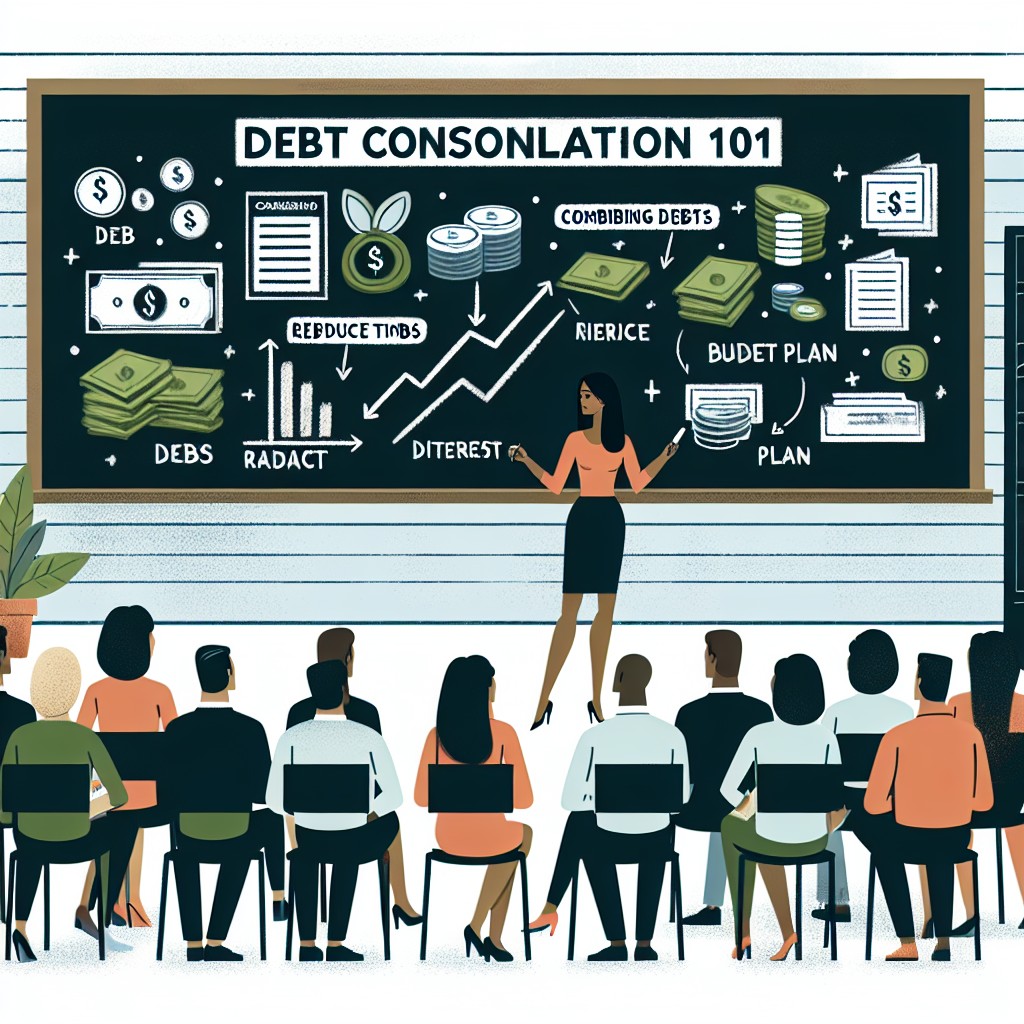Debt Consolidation 101: Managing Debt and Regaining Financial Freedom
Introduction
Debt can easily become overwhelming and burden individuals with high interest rates, multiple monthly payments, and a constant sense of financial stress. For those struggling to keep up with their debt, debt consolidation can be a viable solution. In this article, we will explore the basics of debt consolidation, its benefits, and the steps to take to regain financial freedom.
What is Debt Consolidation?
Debt consolidation involves combining multiple debts into a single loan or payment plan. This can be done through various methods, such as taking out a personal loan, transferring balances to a low-interest credit card, or working with a debt consolidation company. The aim is to simplify debt management by reducing the number of monthly payments and potentially lowering interest rates.
Benefits of Debt Consolidation
1. Simplified Debt Management: By consolidating multiple debts into one, individuals can streamline their finances and reduce the stress of managing multiple payments.
2. Lower Interest Rates: Debt consolidation allows individuals to secure a lower interest rate than what they might be currently paying on their outstanding debts. This can result in significant interest savings over time.
3. Fixed Payment Schedule: With debt consolidation, individuals can benefit from having a fixed monthly payment, making budgeting and financial planning easier.
4. Potential Credit Score Improvement: Debt consolidation can help improve credit scores by reducing the overall debt-to-income ratio and making timely payments.
Steps to Debt Consolidation
1. Assess Your Debt: Start by gathering all your debt information, including outstanding balances, interest rates, and monthly payments. This will help you understand the scope of your debt and determine the best consolidation method.
2. Research and Compare Options: Explore different debt consolidation options, such as personal loans, balance transfers, or debt consolidation programs. Compare interest rates, fees, and terms to find the most suitable solution for your needs.
3. Create a Budget: Develop a realistic budget to ensure that you can afford the monthly payments associated with your chosen debt consolidation method. Consider cutting expenses and increasing income if necessary.
4. Apply for Debt Consolidation: Once you have chosen the most suitable option, gather the necessary documentation and apply for your debt consolidation loan or program. Be prepared to provide proof of income, credit history, and any other requested information.
5. Pay off Existing Debts: Once your debt consolidation loan or program is approved, use the funds to pay off your existing debts. Ensure that you close those accounts to avoid any temptation to use them again.
6. Stick to Your Plan: Commit to making your monthly payments on time and in full. Monitor your progress and adjust your budget as needed.
Conclusion
Debt consolidation can be a powerful tool for managing debt and regaining financial freedom. By simplifying debt management and potentially reducing interest rates, individuals can take control of their finances and work towards a debt-free future. Remember to thoroughly research your options, create a budget, and stick to your debt consolidation plan to achieve the desired results.

Published on February 4, 2023
Debt Consolidation 101: Managing Debt and Regaining Financial Freedom
Share This Article
More Articles You Might Like
Discover More Content
Explore our collection of articles across various topics and categories. From cutting-edge technology insights to wellness wisdom, we curate the best stories to expand your horizons.
Article ID: 297